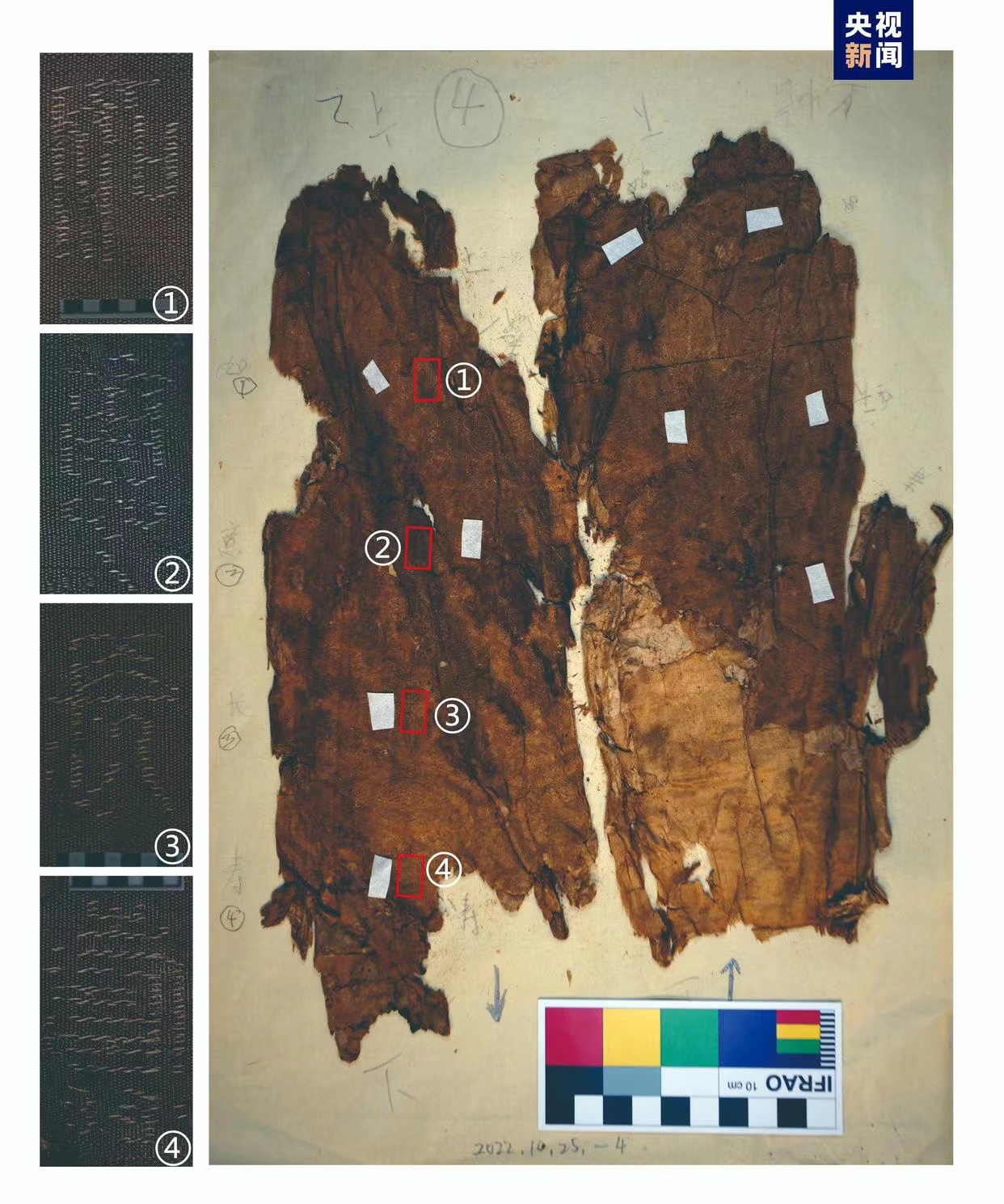
Silk manuscripts unearthed from the Mawangdui Tombs Photo: CCTV/Hunan Museum
The complete inventory of artifacts unearthed from the Mawangdui Tombs, including the famous Lady Xin Zhui's mummified remains, has been finalized after decades of efforts. The collection includes a total of 26,937 items, covering three primary categories: lacquerware, textiles, and bamboo and silk manuscripts, state broadcaster CCTV reported on Tuesday, citing the Hunan Museum.
Located in Changsha, Hunan, Mawangdui houses the grand tomb of the Marquis of Dai from the Han Dynasty period (202 BC-220 AD), as well as his wife and son's burials. The site gained international attention in the 1970s when researchers opened a coffin and found a female corpse that showed no signs of decay. The corpse is said to be that of an aristocrat named Lady Xin Zhui, the wife of the Marquis of Dai.
Among the unearthed artifacts, 1,017 pieces of lacquerware were cataloged, with 869 appearing to be very well-preserved. The textile collection, predominantly silk, includes 24,490 items, 212 of which are intact, while the remaining are fabric fragments. Additionally, 1,430 bamboo and silk manuscripts were identified, including silk books and paintings, wooden tablets, and bamboo slips.
The archaeological excavation of the Mawangdui Han Tombs, completed between 1972 and 1974, is recognized as one of the 20th century's most significant discoveries in the world.
Initial reports, published in October 1973 and July 2004, documented over 3,000 artifacts from the tombs.
However, many items were not fully accounted for in these early reports, especially from Tombs 2 and 3, according to Yu Yanjiao, director of the Mawangdui Tombs research and exhibition center at the Hunan Museum.
Yu explained that the earlier reports were incomplete, particularly because the excavation of Tombs 2 and 3 was still ongoing when the first report was published in 1973. The 2004 report improved on the documentation but still left significant gaps. The recent comprehensive inventory process, coupled with advanced research, has addressed these gaps, providing a more accurate and detailed tally.
The leap from "over 3,000" to 26,937 artifacts highlights the advancements in research methodologies and technological capabilities in the field of archaeology, said the report.
For example, thanks to new technology, during the recent reorganization process researchers identified important artifacts like some remnants of silk fabric woven with auspicious symbols for the first time.
Duan Xiaoming, director of the Hunan Museum, said that with the exception of some ceramic coins and bamboo fragments, which have not yet been classified, the entire collection of Mawangdui artifacts has been systematically cataloged. This thorough documentation lays a solid foundation for further research and the preservation and utilization of these cultural relics.
According to Duan, the Hunan Museum plans to establish a Mawangdui Tombs research data center, aimed at digitizing the entire collection. The museum will also host an international academic symposium on August 18, marking the 50th anniversary of the Mawangdui excavation, where preliminary findings from the new research will be unveiled.
Global Times




